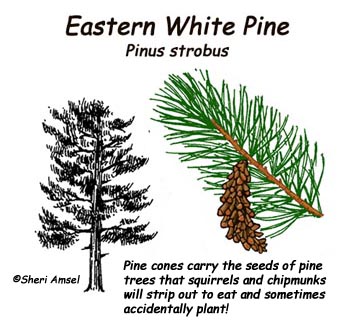

Pine cones carry the seeds of pine trees, but they are also a clever adaptation for getting new pine trees planted. Small rodents, like squirrels and chipmunks, carry cones away to strip the scales off for the seeds inside. This gets the seeds out and ready to grow as soon as they hit the ground. Any seeds that the animal doesn't eat are ready to start a new pine tree!
When you research information you must cite the reference. Citing for websites is different from citing from books, magazines and periodicals. The style of citing shown here is from the MLA Style Citations (Modern Language Association).
When citing a WEBSITE the general format is as follows.
Author Last Name, First Name(s). "Title: Subtitle of Part of Web Page, if appropriate." Title: Subtitle: Section of Page if appropriate. Sponsoring/Publishing Agency, If Given. Additional significant descriptive information. Date of Electronic Publication or other Date, such as Last Updated. Day Month Year of access < URL >.
Amsel, Sheri. "Pine Tree Adaptations" Exploring Nature Educational Resource ©2005-2024. December 14, 2024
< http://www.exploringnature.org/db/view/1689 >
